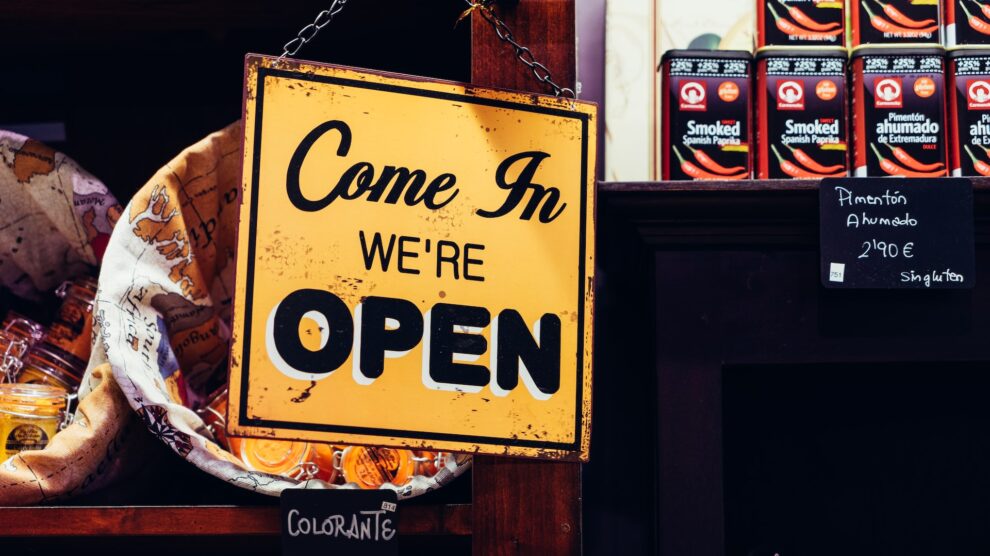While you might see the sudden experiential marketing events that are pop-ups online and think they are sudden and impromptu, this notion couldn’t be further from the truth. Pop-ups are carefully planned activations tailored to the brand’s target audience, allowing a unique opportunity to connect with the target audience, but what does it take to make your pop-up a success?
Getting Your Brand to Stick with Potential Customers
The value that businesses must emphasize in their pop-up function is stickiness. No, that doesn’t mean you literally want your customers to walk away sticky, but you do want your message to stick with them. After all, what good does hosting a pop-up activation do if visitors forget about it immediately? Your goal should be for your pop-up to be engaging enough that your brand and its message stick with viewers long after you walk away.
One way to achieve this stickiness is to provide some sort of valuable insight or education. For example, if you’re hosting a pop-up shop for a cosmetics brand, it might be a good idea to host tutorials explaining how to use the products. By giving consumers this insight on how to interact with the brand, you are not only encouraging them to use the product, but also meeting them on their level by giving them useful tips they can take into their daily lives.
Of course, an even easier approach is to give customers free swag, giveaways, or samples. Giving the customer something free is a great way to hook them and get them through the door, allowing you to deliver your brand message to them.
With that being said, however, picking the right thing to give away is essential. For consumer goods brands, the solution is easy: give away free samples of your product for attendees to try.
For other companies, don’t underestimate the value of useful branded swag, but remember that the keyword here is “useful.” While frisbees might work for a beach function, they probably won’t be helpful for your typical pop-up. Additionally, branded magnets or stickers usually don’t make much of an impact. Conversely, a branded stress ball might be kept on your customer’s desk, allowing your brand to live on far beyond the pop-up.
When it comes to pop-up events, it’s great to think outside the box, but it’s essential not to neglect your core competencies. If you try to do something too ambitious (i.e. is above your means to pull it off well), the results could backfire. Moreover, make sure to do something that makes sense for your brand and its identity, or else you could end up leaving your target audience confused.
Some of the most successful pop-ups are those which incorporate all five senses. Of course, you know that you want your pop-up to look good, and you want to give customers something to physically interact with (or touch), but the other three senses can still play a key role. Studies have shown that music and scents can have an enormous influence on consumer behavior. Even giving customers a small snack can warm them up to you, which is especially important for brands and companies in the food and beverage industry. Take advantage of the five senses to truly engage your customers in your pop-up.
However, the most important thing a brand must do when putting on a pop-up is provide value to the customer, which will likely vary depending on the particular brand. While some pop-ups might thrive in being jovial and entertaining, others may be more functional in nature. Understanding the identity of your brand and what it has to offer consumers — be it fun or usefulness — will allow you to enhance the customer experience and create a real point of difference.
Key Factors to Pop-up Success
Having adequately trained staff is also a pivotal aspect of success for a pop-up event. Even if your activation idea is brilliantly thought-out and innovative, if your staff is not properly prepared to interact with your target audience, it could quickly result in backlash from your target audience of consumers.
For one, every staff member should have at least a basic understanding of the brand — enough to answer any common questions a consumer might have. You should also have at least one person on hand with more in-depth knowledge of the brand and its products to answer any of the more complex questions consumers might have.
Beyond that, don’t forget the small things that will help your experiential marketing event shine. Have your staff wear uniforms so they look clean and professional, and do your best to maintain an elegant and streamlined look for your physical space, emphasizing cleanliness and organization. The worst thing you can do is to have a pop-up that looks unkempt, cluttered, or just haphazardly thrown together, as this will only create a negative perception of your brand in the eyes of consumers.
Finally, make sure that your staff and space are welcoming to consumers. Although your pop-up staff may only be temporary workers, try your best to find people who genuinely enjoy your brand and are passionate about its message. At a minimum, staff the pop-up with people with outgoing personalities. A splash of color also goes a long way. Try to avoid anything that looks too drab, and remember the different psychological effects that color can have in marketing.
Pop-ups can be a powerful tool for brands looking to connect with potential customers, but like any form of experiential marketing, successfully operating a pop-up requires careful planning and a precise understanding of your brand’s message and audience. If you are able to successfully pull off the pop-up, your brand will stick with clients in ways you could not imagine.





